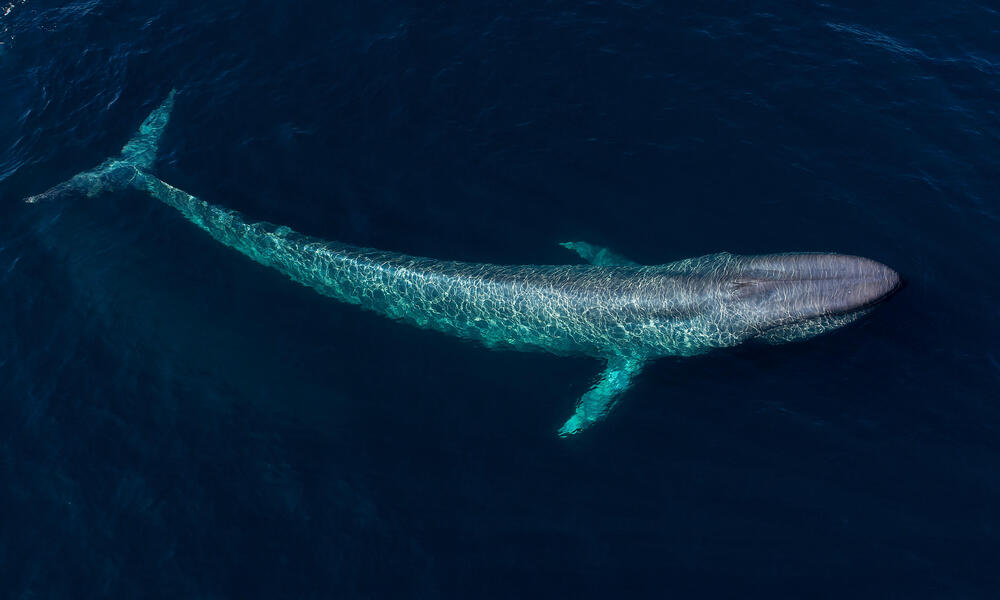Decoding The Mysteries Of Blue Whale Call Sounds: A Deep Dive Into Nature's Symphony
Have you ever wondered what it sounds like when the largest creature on Earth communicates? Blue whale call sounds are more than just oceanic whispers—they're a vital part of marine life that scientists are still unraveling. These gentle giants have been singing their songs for millions of years, but we’re only just beginning to understand what they’re saying. Whether you’re a marine biology enthusiast or simply curious about the wonders of the deep, this article will take you on a journey through the world of blue whale vocalizations.
Imagine being underwater, surrounded by an eerie silence broken only by faint clicks, groans, and hums. That’s what it feels like to listen to blue whale call sounds. These low-frequency songs can travel thousands of miles across the ocean, connecting whales over vast distances. But why do they make these sounds, and what do they mean? Let’s dive in and find out.
Blue whales aren’t just big—they’re also incredibly vocal. Their calls are some of the loudest sounds produced by any animal on the planet. And no, we’re not talking about your neighbor blasting their stereo at 2 AM. We’re talking about sounds so powerful they can be heard from one side of the ocean to the other. So, buckle up, because we’re about to explore the fascinating world of blue whale communication.
Read also:Uptown Whittier Street Fair The Ultimate Guide To Fun And Excitement
What Are Blue Whale Call Sounds?
Let’s start with the basics. Blue whale call sounds are essentially the way these majestic creatures communicate with each other. Think of them as nature’s version of a walkie-talkie, but instead of static, you get deep, resonant tones that echo through the water. These sounds are typically in the range of 10 to 40 Hz, which is below the threshold of human hearing. But don’t worry—scientists have figured out how to record and amplify these calls so we can experience their beauty.
Blue whale calls come in different forms, but the most common ones are the "pulse train" and the "song." The pulse train consists of short, repetitive sounds that are thought to be used for navigation and communication over short distances. On the other hand, the song is a series of complex patterns that can last up to 30 minutes. It’s believed that male blue whales use their songs to attract mates, kind of like a serenade—but make it marine life.
Why Do Blue Whales Make These Sounds?
Now that we know what blue whale call sounds are, let’s talk about why they exist in the first place. Communication is key in the animal kingdom, and blue whales are no exception. These sounds serve multiple purposes, from finding food to locating potential mates. Here’s a quick breakdown:
- Mating: Male blue whales use their songs to woo females, showcasing their strength and stamina. Think of it as a whale version of "Love Story" by Taylor Swift, but with a lot more bass.
- Navigation: In the vast expanse of the ocean, it’s easy to get lost. Blue whales use their calls to navigate by bouncing sound waves off underwater structures, much like how bats use echolocation.
- Social Interaction: Just like humans, blue whales need to stay connected. Their calls help them maintain social bonds and coordinate movements, especially during migration.
So, the next time you hear someone say, "Whales don’t talk," you can confidently correct them. They might not use words, but they sure know how to communicate!
How Are Blue Whale Calls Recorded?
Recording blue whale call sounds isn’t as simple as sticking a microphone in the ocean. Scientists use specialized equipment called hydrophones, which are designed to capture underwater sounds. These devices are placed in strategic locations to pick up the low-frequency calls of blue whales. Once recorded, the sounds are analyzed using advanced software to decode their patterns and meanings.
One of the coolest things about blue whale calls is that they can be heard from thousands of miles away. This means that researchers can track individual whales across entire ocean basins, providing valuable insights into their behavior and migration patterns. It’s like having a GPS for whales, but without the annoying voice telling you to turn left in 500 meters.
Read also:Half Baked Harvest Parker House Rolls The Ultimate Guide To Perfectly Fluffy Rolls
What Do Blue Whale Calls Sound Like?
If you’ve never heard a blue whale call, you’re in for a treat. These sounds are deep, haunting, and almost otherworldly. Imagine a cello playing a single note for several seconds, followed by a series of rhythmic pulses. That’s what a typical blue whale call sounds like. Some people describe it as a "cosmic hum," while others compare it to the sound of a distant train.
But here’s the kicker: blue whale calls are so low in frequency that humans can’t hear them without special equipment. Scientists have to pitch-shift the recordings to bring them within our range of hearing. So, the next time you listen to a blue whale call, remember that you’re hearing a modified version of their natural sound.
Do Different Blue Whale Populations Have Unique Calls?
Interestingly, yes! Just like how people from different regions have distinct accents, blue whales from different parts of the world have their own unique calls. For example, the calls of North Atlantic blue whales differ slightly from those of their Pacific counterparts. Scientists believe this variation is due to geographic isolation and cultural differences among whale populations. It’s like a whale dialect, if you will.
The Science Behind Blue Whale Communication
So, how exactly do blue whales produce these incredible sounds? It all comes down to their anatomy. Blue whales have a specialized structure in their throat called the "phonic lips," which they use to generate sound. When they exhale forcefully, air passes through these lips, creating vibrations that resonate through their massive bodies. It’s a bit like blowing over the top of a bottle, but on a much larger scale.
But why are their calls so low in frequency? The answer lies in physics. Low-frequency sounds travel much farther in water than high-frequency ones, allowing blue whales to communicate over vast distances. It’s like nature’s version of a long-distance phone call, but without the roaming charges.
Are Blue Whale Calls Affected by Noise Pollution?
Unfortunately, yes. Human activities such as shipping, drilling, and sonar testing have introduced significant noise pollution into the oceans. This noise can interfere with blue whale communication, making it harder for them to find food, mates, and safe migration routes. It’s like trying to have a conversation in a crowded room—it’s possible, but not ideal.
Scientists are working hard to mitigate the effects of noise pollution on marine life. By implementing quieter shipping technologies and establishing protected areas, they hope to preserve the natural soundscape of the ocean. After all, blue whales deserve to be heard, not drowned out by human noise.
The Importance of Blue Whale Calls in Marine Ecosystems
Blue whale calls aren’t just important for the whales themselves—they play a crucial role in the entire marine ecosystem. By communicating with each other, blue whales help maintain the balance of the food chain. For example, their calls can alert other marine animals to the presence of predators or prey, creating a ripple effect throughout the ocean.
Moreover, blue whale calls contribute to the overall biodiversity of the ocean. By studying these sounds, scientists can gain insights into the health and behavior of marine ecosystems. It’s like having a built-in early warning system for environmental changes.
How Can You Help Protect Blue Whale Communication?
If you’re passionate about marine conservation, there are several ways you can help protect blue whale calls. Supporting organizations that focus on reducing noise pollution is a great start. You can also advocate for stricter regulations on human activities in sensitive marine areas. And don’t forget to spread awareness—knowledge is power, after all.
Another way to make a difference is by participating in citizen science projects. Many organizations rely on volunteers to collect data on blue whale calls and other marine sounds. By contributing your time and skills, you can help scientists better understand these incredible creatures and the challenges they face.
Conclusion: The Future of Blue Whale Call Sounds
In conclusion, blue whale call sounds are a vital part of marine life that deserves our attention and protection. From their deep, resonant tones to their complex patterns, these sounds offer a glimpse into the fascinating world of blue whales. By studying and preserving these calls, we can ensure that future generations have the opportunity to experience the beauty of nature’s symphony.
So, what can you do to help? Start by educating yourself and others about the importance of blue whale communication. Support conservation efforts and advocate for policies that protect marine life. And most importantly, take a moment to appreciate the wonders of the ocean and the creatures that call it home.
Now, it’s your turn. Do you have any questions about blue whale call sounds? Or maybe you’ve heard one yourself and want to share your experience? Drop a comment below and let’s keep the conversation going. Together, we can make a difference for these majestic creatures and the ocean they inhabit.
Table of Contents
- What Are Blue Whale Call Sounds?
- Why Do Blue Whales Make These Sounds?
- How Are Blue Whale Calls Recorded?
- What Do Blue Whale Calls Sound Like?
- The Science Behind Blue Whale Communication
- The Importance of Blue Whale Calls in Marine Ecosystems
- How Can You Help Protect Blue Whale Communication?
- Do Different Blue Whale Populations Have Unique Calls?
- Are Blue Whale Calls Affected by Noise Pollution?
- Conclusion: The Future of Blue Whale Call Sounds
Article Recommendations


